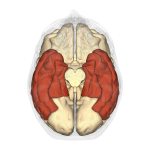Does music training change the brain?
Hello Dear Reader
 Indian Summer has passed here in Luzern. The air is full of autumn chill and the ever early nights are creeping towards freezing. Mind you, it is November! So this turn of events is the expected compared to the balmy weather of recent times. In fact, my local friend Suse tells me that the peaks of 21degrees Celsius that we reached in late October (just shy of 70 degrees Fahrenheit for my US friends) last occurred in the mid-1960s. Lucky me.
Indian Summer has passed here in Luzern. The air is full of autumn chill and the ever early nights are creeping towards freezing. Mind you, it is November! So this turn of events is the expected compared to the balmy weather of recent times. In fact, my local friend Suse tells me that the peaks of 21degrees Celsius that we reached in late October (just shy of 70 degrees Fahrenheit for my US friends) last occurred in the mid-1960s. Lucky me.
Today I have been reading a new Frontiers paper on a perennial topic in music psychology – musical training and the brain. When I was studying music psychology as a grad student this topic was taught from the assumption, ‘Music changes the brain so our job is to work out how’. But are we certain of this fact?
 The fascination with the differences in musicians’ brains can be traced back to nearly 150 years ago to a German surgeon Siegmund Auerbach, who contributed a great deal to the study of epilepsy. He was also fascinated by the minds of experts and studied the postmortem brains of 5 of the greatest musicians of the age. He noted alterations to two of the major lobes, parietal and temporal. And don’t forget, those are changes he could see with the tech of the 1800s – so pretty striking.
The fascination with the differences in musicians’ brains can be traced back to nearly 150 years ago to a German surgeon Siegmund Auerbach, who contributed a great deal to the study of epilepsy. He was also fascinated by the minds of experts and studied the postmortem brains of 5 of the greatest musicians of the age. He noted alterations to two of the major lobes, parietal and temporal. And don’t forget, those are changes he could see with the tech of the 1800s – so pretty striking.
Dr Auerbach’s conclusion was that the musical talents of these 5 individuals were the reason why they had different brains compared to people who were not such accomplished musicians.
As clear as it seems, this brain finding leaves us with a big question. Did these 5 people have different brains because of their training or were their brains different to start with? Are these 5 cases really examples of music training-induced neuroplasticity?
“Neuroplasticity” refers to the brain’s ability to change throughout the lifetime in response to new activity, learning and damage. Changes might occur in the actual anatomy or to the way that the same anatomy functions.
 We know that neuroplasticity is a fact because we see it all the time in people with brain damage, where the brain ‘rewires’ itself to cope with what is lost. We also see neuroplasticity as a result of everyday skill development. For example, a study has shown that the visual cortex alters after just a few weeks of juggling lessons.
We know that neuroplasticity is a fact because we see it all the time in people with brain damage, where the brain ‘rewires’ itself to cope with what is lost. We also see neuroplasticity as a result of everyday skill development. For example, a study has shown that the visual cortex alters after just a few weeks of juggling lessons.
How about music? Can musical training change the brain?
According to a new review by Dawn Merrett and colleagues (9th Sept 2013, Frontiers in Psychology) over 100 neuroimaging studies have demonstrated that musicians have different brains compared to groups of people who have had little or no musical training. Differences are found in anatomy, connectivity, and functional activity across a wide range of brain locations. So Dr Auerbach was right, at least we can assume that musicians’ brains are different…right?
Yes, probably, but perhaps not in as many ways as you thought. One of the first problems with this wealth of evidence is that it is not always consistent. The authors of the present review paper provide quite a few examples of cases where one study reports a difference in musician brains, while another study finds the same difference but in favour of non-musicians.
 There are also differences in the locations reported for musical training induced neuroplasticty. Everyones brain is different but if musical training results in significant changes then we should be able to narrow them down in the brain. In reality this task is proving tricky. The road map for a musicians brain has a some certain markers but fewer than we might have assumed in the early days of imaging the musical brain. It seems that the more research we do, the more murky becomes the picture.
There are also differences in the locations reported for musical training induced neuroplasticty. Everyones brain is different but if musical training results in significant changes then we should be able to narrow them down in the brain. In reality this task is proving tricky. The road map for a musicians brain has a some certain markers but fewer than we might have assumed in the early days of imaging the musical brain. It seems that the more research we do, the more murky becomes the picture.
The fall back explanation for differences in findings between studies is often differences in the types of scanning technique used and/or analysis methods. The fact that different ‘technical’ settings on either imaging machines or statistical programs can produce varying results is an issue that needs to be addressed rather than fallen back on. In terms of our question of musical neuroplasticity, we need more papers that replicate ‘technical settings’ in order to establish the reliability of results.
 In the present review paper the authors also discuss the idea of sex differences. The differences between the male and female brain are well documented but it appears that sex differences may also influence neuroplasticity, due to the impacts of hormones and genetics. Before reading this paper I had not realised that several studies of musical neuroplasticity have found differences between male musicians and non-musicians, but not between females.
In the present review paper the authors also discuss the idea of sex differences. The differences between the male and female brain are well documented but it appears that sex differences may also influence neuroplasticity, due to the impacts of hormones and genetics. Before reading this paper I had not realised that several studies of musical neuroplasticity have found differences between male musicians and non-musicians, but not between females.
Sex differences therefore must be controlled carefully in studies of neuroplasticity. And that is true of other factors that are partly genetically driven, such as personality. Such factors may influence neuroplasticity in connection with any activity (music, juggling) but they are rarely if ever controlled for in studies of musical neuroplasticity.
Other factors that the authors discuss which may influence musical neuroplasticity include absolute pitch (AP), amusia and musicality, all of which have been linked to genetic factors.
 In conclusion, the present paper presents a simple yet effective diagram that outlines a number of possible genetic as well as environment influences on musical training neuroplasticity, including sex, personality, practice habits, AP, and auditory environment. Rather than ignore these factors as ‘nuisance variables’ we must accept them as markers of the true richness of neuroplasticity and systematically study their effects. Food for thought.
In conclusion, the present paper presents a simple yet effective diagram that outlines a number of possible genetic as well as environment influences on musical training neuroplasticity, including sex, personality, practice habits, AP, and auditory environment. Rather than ignore these factors as ‘nuisance variables’ we must accept them as markers of the true richness of neuroplasticity and systematically study their effects. Food for thought.
For my own mind, this article will make me more cautious when thinking about musical training neuroplasticity. As far as I am concerned the answer to my initial question is yes, musical training changes the brain. Despite the problems outlined in the present review I still see convergence in the literature on the musical brain meaning that the majority of evidence overwhelming supports the idea that musicians’ brains are different.
Having said this I agree that longitudinal studies, where people are studied from the start of training and for a long time afterwards, are the only real way to control the many factors that may influence brain development over a musician’s lifetime. Such studies are tricky to fund and run but, in combination with neuroimaging studies, they will provide the best evidence to answer the next more interesting questions: ‘How and why does musical training change the brain’?



2 Comments
Kaity
What is the name of the article that you were reading?
vicky
Hi Kaity. The direct link to the article is in the blog (where the authors and the journal are noted) but here it is again: http://www.ncbi.nlm.nih.gov/pubmed/24058353
All the best, Vicky